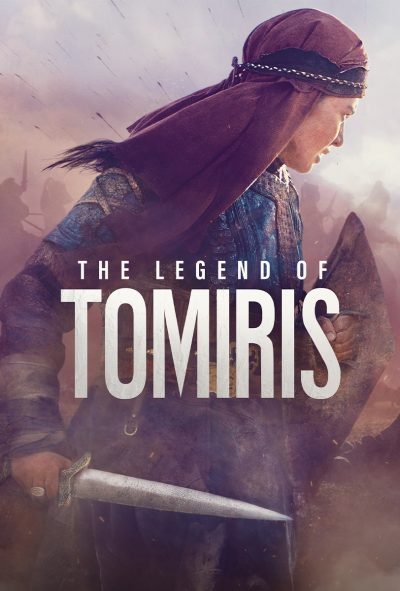★★★
“Steppes up.”
 Not quite the first film from Kazakhstan I’ve ever seen. That would be Diamond Cartel, though hard to think of a film more different from this sweeping historical epic. It tells the story of Tomiris (Tursyn), the princess of a tribe living on the Scythian plains to the East of the Caspian Sea, in the sixth century BC. She was orphaned as a young child, after her father was betrayed, and had to flee into exile. But she never forgot her origins, and as an adult, returned to claim her inheritance and take vengeance on the traitors. However a bigger threat loomed in the shape of Persian emperor Cyrus, who was casting envious eyes at the territory of Tomiris and the other tribes. After further treachery, she rallies the population under her banner, and prepares for an all or nothing battle against Cyrus’s numerically superior forces.
Not quite the first film from Kazakhstan I’ve ever seen. That would be Diamond Cartel, though hard to think of a film more different from this sweeping historical epic. It tells the story of Tomiris (Tursyn), the princess of a tribe living on the Scythian plains to the East of the Caspian Sea, in the sixth century BC. She was orphaned as a young child, after her father was betrayed, and had to flee into exile. But she never forgot her origins, and as an adult, returned to claim her inheritance and take vengeance on the traitors. However a bigger threat loomed in the shape of Persian emperor Cyrus, who was casting envious eyes at the territory of Tomiris and the other tribes. After further treachery, she rallies the population under her banner, and prepares for an all or nothing battle against Cyrus’s numerically superior forces.
It looks very nice. The cinematography is excellent, and there’s no arguing that the landscapes in question are perfect for this kind of thing. Though it feels as if the film-makers fell in love with the scenery more than the characters. It seems that half the running time involves shots of characters moving from Place A to Place B, and considering the film is 156 minutes long, that’s a lot of galloping back and forth. There are even some (CGI, presumably) high-altitude aerial shots, which reduce the players to literal specks on the ground, and this is indicative of the approach being taken here.
I’d have rather seen a more personal portrait of Tomiris, and her relationships with husband Argun (Akhmetov) or best friend and fellow warrioress, Sardana (Lighg). For the movie is best at provoking emotions in the viewer, when the characters are experiencing them. Perhaps the best example is when word of Cyrus’s betrayal reached Tomiris; she knows the truth, yet suppresses herself and lets his ambassador dig his own grave with his lies. [Sidenote: as I waited for the inevitable “This is SPARTA!” moment, for a while, I was wondering why Cyrus looked and behaved so differently from his portrayal in 300. Turns out that was a different Persian emperor, Xerxes, from about fifty years later. Not that I’d take 300 exactly as gospel!] The intensity of her feelings internally is obvious, and more of this passion would have been welcome.
The version of history told here is mostly based on the writings of Herodotus. He may or may not be the most reliable source; as Chris pointed out, political spin was apparently being applied to events, even in those days. But his version is likely more entertaining than other accounts, in which Cyrus died in his sleep. While I’m sure events from 2,500+ years ago fall outside the statute of limitations for spoilers, let’s just say, that doesn’t quite happen here. Though I was a little disappointed in the “hands-off” approach, historical accuracy be damned; Tomiris largely sits back and watches her troops go into battle. The action scenes are well-staged though, and help enliven a film which does occasionally need a shot of adrenaline.
For I definitely found myself checking my watch, and it’s a case where this would be a better 100-minute movie than a 156-minute one. The finer details of negotiations between the tribes really didn’t add much; on the other hand, the “warrior woman” culture of the Massagetae feels almost glossed over. Though it’s being taken as routine, rather than depicted as some kind of aberration, was a pleasant surprise. Tursyn, appearing in her first film, manages to overcome her lack of screen experience well, and without her, this could potentially have ended up being little more than a lengthy promo video for Central Asian tourism. While definitely worth a watch – not least as a more down-to-earth contrast to Mulan – I wouldn’t say it was worth a rewatch.
Dir: Akan Satayev
Star: Almira Tursyn, Adil Akhmetov, Erkebulan Dairov, Aizhan Lighg
a.k.a. Tomiris




